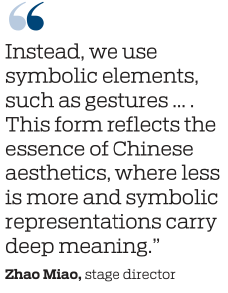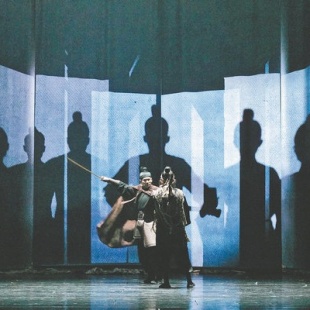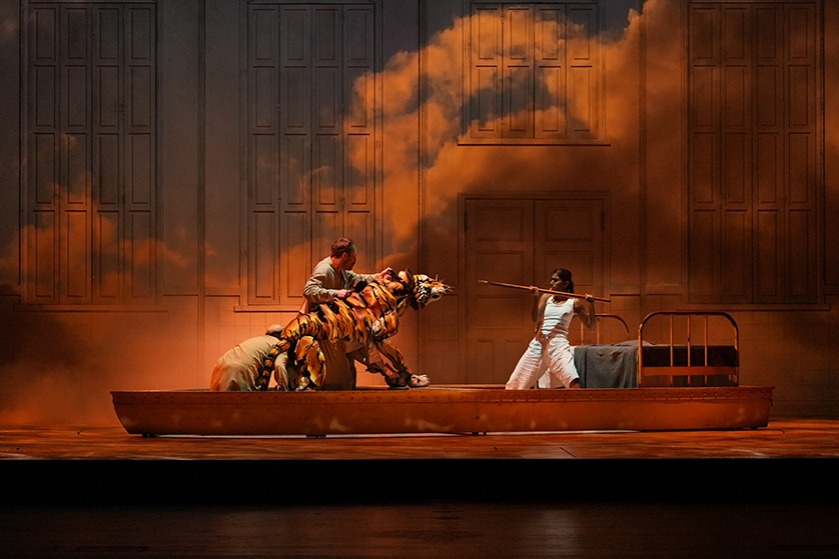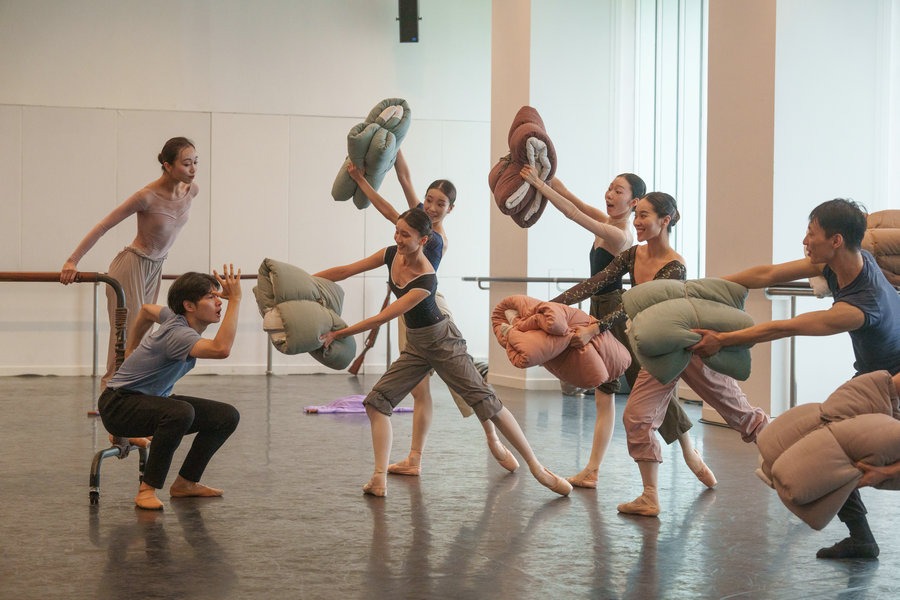Daring to take on the challenges of adaptation
Turning a 700,000-word novel into a stage play and attracting younger audiences are obstacles the production overcomes with innovation, Chen Nan reports.


A theater company dared to take on the task of adapting a sprawling 700,000-word novel with over 170 characters and condensing it into a three-hour stage production — a huge feat. For the director, playwright, actors, and audiences, it is more than just a challenge; it's a high-stakes game of creativity in which each second counts and every movement is magnified.
When Beijing One World Culture Communications first invited Chinese director Zhao Miao to direct the play Two Capitals, Fifteen Days, adapted from Ma Boyong's popular novel of the same name, he was filled with doubt.
Could they truly capture the essence of a world so vast, yet bound by the limitations of time and space? The task was nothing less than to breathe life into a complex world within the confines of a theater while ensuring that audiences remained captivated from start to finish.
The play, premiered in 2022, achieved tremendous success, performing nearly 60 times across the country. The Beijing company launched a tour of a new version of the play in June, which is hitting cities such as Beijing, Shanghai, Guangzhou in Guangdong province, and Nanjing in Jiangsu province.
"We've been closely tracking audience feedback over the past few years," says Zhao, founder and head of Theatre SanTuoQi in Beijing. "How did they respond emotionally? Were there moments when they were deeply moved, confused, or disengaged? Every reaction helps to refine the pace, dialogue delivery, and emotional beats so that we can better connect with them in the next performance."
Set against the backdrop of the Ming Dynasty (1368-1644), the story follows Prince Zhu Zhanji on a whirlwind, life-and-death journey from Nanjing to Beijing along the Grand Canal — an impossibly dangerous mission spanning just 15 days. The journey becomes even more perilous when the prince's ship explodes, plunging him into a treacherous conspiracy to seize power and forcing him to confront external enemies and his inner demons.
"For me, the play is like a massive ship," Zhao explains. "Managing over 200 characters, navigating the complex relationships between them, and seamlessly transitioning between 37 different scenes are all major challenges. It tests the capabilities of the entire team."
In the production's latest iteration, Zhao places a stronger emphasis on creating a palpable "sense of urgency" within the story, highlighting the characters' "struggles with human nature" as they grapple with extreme circumstances.
This raw, emotional intensity is amplified by the decision to cast young actors who closely resemble the characters' ages, lending authenticity and immediacy to the themes of growth and choice that run throughout the narrative.
"I've been playing the role of Zhu Zhanji since its premiere," says actor Ma Xin, who portrays the prince. "As someone born in Nanjing, where the story is set, I feel a deep connection to it. It feels like destiny, like I was meant to play this role. It's as if fate brought me here."
He adds: "When I first took on the role, I was the same age as the prince. Now that I'm older, I understand him better. It's a journey of personal growth, both on and off stage."
Zhao, known for his innovative approaches to physical theater, blends the intensity of movement and martial arts with traditional elements taken from Chinese opera to create a unique narrative. The performance unfolds like a living scroll, depicting the bustling life along the Grand Canal, a symbol of Chinese culture and history.
The fight scenes, for example, are inspired by classical techniques of Chinese opera and incorporate traditional weapons like knives, swords and spears.
"Chinese opera has an inherent abstraction that aligns perfectly with our approach," Zhao says. "On stage, we won't see realistic depictions of buildings, ships, forests or rivers. Instead, we use symbolic elements, such as gestures, minimalist set designs, and visual cues that evoke mountains, cities, rivers and fire. This form reflects the essence of Chinese aesthetics, where less is more and symbolic representations carry deep meaning."
In a world where young people often crave something unique when they attend the theater, Zhao's production offers a compelling reason to engage with history.
By blending modern energy with traditional Chinese aesthetics, the play is a dynamic way for young audiences to experience the grandeur and complexity of the Ming Dynasty. In doing so, it connects them to a past that might otherwise seem distant or irrelevant, making history come alive through art and performance, says Yu Tingting, producer of the play and general manager of the Beijing company.
According to Yu, the upcoming national tour will introduce a new level of collaboration. Students from the Beijing Vocational College of Opera and Arts will join the cast, marking the beginning of a partnership between the college and her company. This initiative will involve young actors from traditional Chinese opera in theatrical productions, allowing them to gain invaluable stage experience before graduating.
"Collaborating with the vocational college gives the students an exciting opportunity to perform and gain hands-on experience," says Yu. "It also introduces young audiences to the timeless beauty of Chinese opera and theater in a contemporary setting."
Contact the writer at chennan@chinadaily.com.cn










































